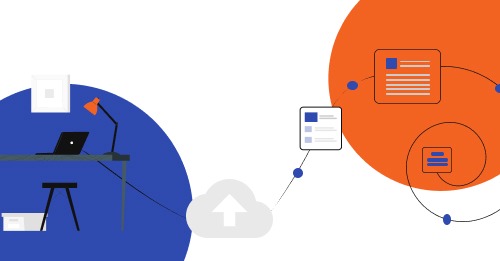The customer experience (CX) refers to the consumer’s overall opinion of your brand due to all of their contacts with your company across all contexts. The user experience you offer on your website can make or break your relationship with your clients in the world of eCommerce. Focus instead on how a positive client experience can benefit your brand.
- What Is an eCommerce Customer Experience (CX) Audit? Story From The Beginning
- Why CX Audit Is Important
- CX vs UX
- Our Approach
- Key Stakeholder Interviews
- An In-Depth Google Analytics Audit
- UI/UX and Navigation Audit (Including Hotjar Reporting)
- Marketing Automation
- Technical Audit
- Our Methodology of CX Audit
- Conclusion
Each CX audit begins with a client-led open discovery session to fully understand the client’s current major pain points and annoyances, as well as the objectives and aspirations of all levels of the organisation. To ensure that we have the necessary data to create personalised recommendations, this also entails developing a thorough grasp of areas spanning internal team operations, essential stakeholder requirements, customer profiles, and larger corporate objectives.
CX audits comprise a thorough examination of the entire customer journey, with an emphasis on essential touchpoints, such as:
- Brand experience (brand journey, content, and value proposition)
- eCommerce product discovery (navigation, search experience and key functionality like filtering)
- Product Education
- Path to a frictionless checkout experience
- Customer relationship management and communications
- Post-purchase experience and technologies
- Improving team efficiency through (leveraging tech stack or processes to reduce the manual overhead)
- Optimisations and usability for mobile devices
What Is an eCommerce Customer Experience (CX) Audit? Story From The Beginning
For many customers, CX is the most crucial consideration when selecting a good or service. Customers today demand more than simply a website, app, or e-commerce that functions; they want it to function flawlessly, save time, and potentially even recognise their likes or preferences without even being aware of it.
Not only that, but for many brands, CX is a means of preserving a lead over rivals. Leading companies continuously work to create an omnichannel experience that puts the final consumer and his relationship with the company front and centre.
In light of this, CXO became a vital task for a brand focusing on eCommerce optimisation. This improvement process enables the brand to create a better experience that will optimise conversion rates, strengthen the brand’s reputation, and grow the company’s reputation.
Your brand can benefit from great CX in the following ways:
- consumer contentment
- customer advocacy and fidelity
- the profitability of a business
Simply put, it makes logic that satisfied customers will continue to support and even promote your company. And your company’s increased sales and revenue result from that advocacy and support.
Why CX Audit Is Important
What is UX? What is the difference from CX?
According to our definition, CX is how customers view all of their encounters with a brand. The goal of user experience (UX) is to make tasks as simple, effective, and entertaining for users as possible. We can immediately distinguish between the two:
- CX focuses on the consumer and his relationship with a brand,
- whereas UX focuses on the end user (the person utilising the product or service).
Service Design, the most extensive and comprehensive experience design approach, includes both UX and CX.
Through a variety of factors, UX design seeks to increase customer happiness by offering a high-quality website and service:
- Usability is the cornerstone of user experience design and establishes how successfully, efficiently, and satisfactorily a person may utilise an online store, a website, or an app.
- The goal of interface design is to make the design as logical and consistent as feasible by defining the interaction patterns that are most appropriate for a given platform.
- Information Architecture (IA) describes organising and structuring a website’s information so that users can navigate it as quickly as feasible.
- The use of graphics, colours, typefaces, and other aspects to improve a design or an interaction and interest users is known as user interface design or UI design.
Given all this, the eCommerce User experience is a crucial component of our CXO methodology for brands who want to provide their customers with an optimised experience and improved digital services.
CX vs UX
Our Customer Experience (CX) Audit uses the following techniques to create a Growth Priority Stack and outline the Growth Partnership phase.
Our Approach
Key company stakeholders will be surveyed in person or through written questionnaires to get their opinions. The goals, difficulties, audience, value proposition, and rivals of your organisation will be revealed to us during this intake process. The essence of your brand will be explored, including how it is currently regarded and how it compares to how you ultimately want to be seen. The information you get from these sessions will be put to use to develop your creative vision for your new store.
Key Stakeholder Interviews
This step involves thoroughly examining the existing analytics for your online store. We’ll assess significant eCommerce performance indicators, such as traffic, traffic sources, new vs repeat consumers, conversion rate, average order value, and lifetime value. These behavioural analytics enable us to make a concrete evaluation of the performance of your online store. Additionally, we’ll use these figures as a crucial benchmark for measuring the ROI of our efforts.
We examine the following throughout this portion of the audit:
- Users
- Device and technology performance
- eCommerce performance
- Traffic source performance
- Content performance
- Site search performance
- User interactions
An In-Depth Google Analytics Audit
We’ll evaluate your on-site experience from a user’s point of view, looking at your branding, store copy, and content, as well as how simple it is for customers to locate and buy the items they need. Heat mapping will also be used to track visitor behaviour and pinpoint trouble spots hurting bounce and conversion rates.
Finally, we’ll assess your website’s functioning across various screen sizes by thoroughly testing it on mobile devices and checking for compliance with eCommerce best practices.
By conducting the following user tests, we get actual users to share their opinions about the website and voice their worries and frustrations:
- User interviews
- 5-second tests
- Usability testing
- First-click tests
- Tree testing
- Card sorting
- Eye-tracking
The main eCommerce customer experience report we create contains the user testing findings as well as the complete transcripts of all data acquired.
UI/UX and Navigation Audit (Including Hotjar Reporting)
We review your current marketing automation tech stack so that we may offer suggestions and put necessary enhancements into place. We determine which options are ideal for your eCommerce ecosystem and inform you of the best setup for the technologies we provide.
The audit’s final report includes our proposed marketing automation and customisation plan.
Marketing Automation
This audit is being done to offer comprehensive recommendations for technical-level changes. The following are involved:
- A performance audit of the critical pages of the website
- Detailing out performance metrics as needed
- Advising on how to upgrade the website’s technical aspects
Technical Audit
We may begin the process of customer experience optimisation after the project scope, boundaries, and mission are known.
- Using our AWARE methodology, we conduct interviews with key stakeholders during the first phase to lay the groundwork for the project (Analysis of Web Application Requirements). These interview sessions offer insightful information that would be difficult to gather otherwise, and the typical findings are outlined in a structured overview.
- The following step, which is the foundation of our technique, involves gathering data from inspections (such as UX review, tech inspection, and SEO audit…), matching it with ecommerce data (such as analytics, CRM, and ERP…), and validating it with customers via interviews (if needed). With the help of these exercises, we’ll improve the initial user scenarios, pinpoint the main conversion paths, and sketch out the Emotional Customer Journey. This plan combines a time-based CX with indicators of the customer’s emotional state to identify bottlenecks and pain areas.
- After this path, a roadmap of the suggested actions will be established, together with a comprehensive list of prioritised additions and improvements, to achieve the enhancements we set as starting goals: boost brand recognition, increase conversion rate, and improve corporate reputation.
Our Methodology of CX Audit
We may pinpoint essential areas of development potential in addition to flaws and quick wins by inspecting and analysing the data from your store. This process is referred to as a “Customer Experience Audit” of your company. We support this procedure and have observed how it can serve as the basis for further expansion of a Shopify store.
About benefits in a nutshell:
- Using data, you better grasp the actual demands of your customers.
- Learn how to take concrete action to enhance the customer experience.
- Improve the level of client happiness
- Boost sales and profits
- Increase consumer trust






